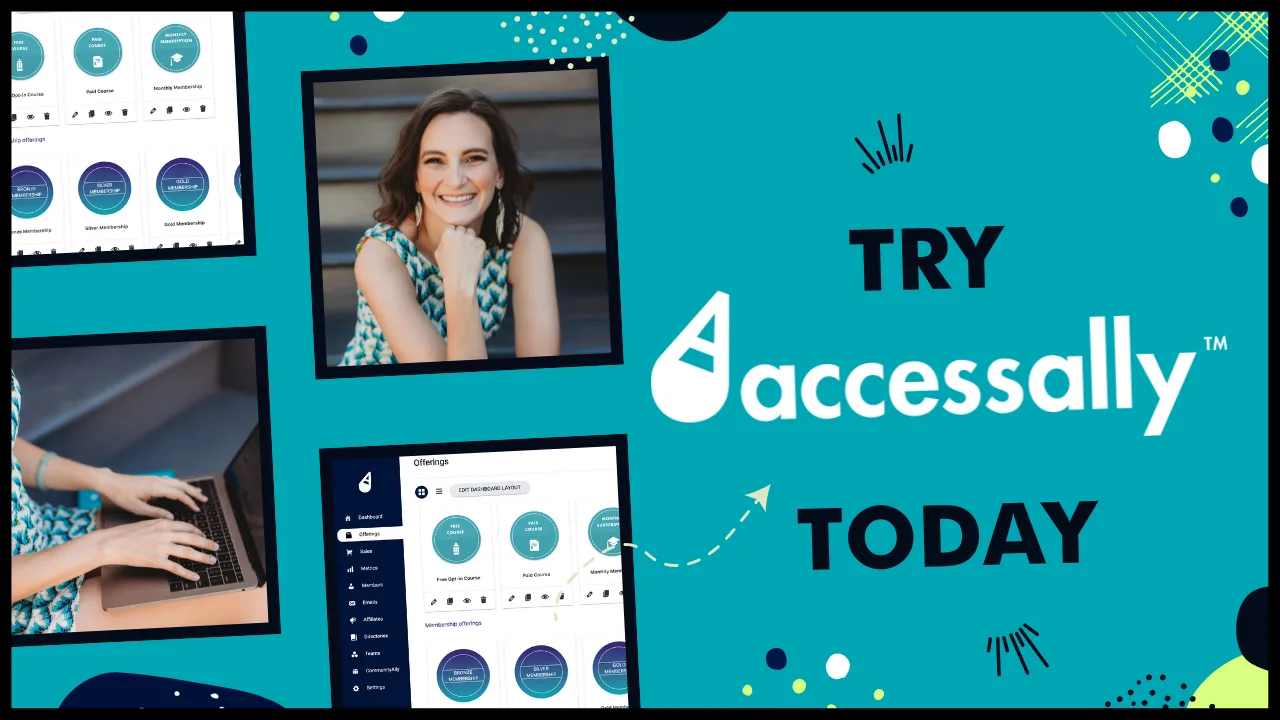Introduction and Overview
Building a sustainable revenue model for your education business isn’t just about setting prices and hoping for the best. It’s about creating a thoughtful ecosystem where value delivery and financial stability work perfectly. When done right, your education business can thrive while genuinely transforming your students’ lives.
Let’s face it—the education landscape has evolved dramatically over the past few years. Traditional one-time course sales have given way to more sophisticated models that prioritize long-term student success and steady business growth. Whether you’re running a small coaching practice or scaling an online academy, the key lies in developing revenue streams that are both predictable and aligned with your educational mission.
I’ve worked with hundreds of course creators and educational entrepreneurs and noticed a common thread: those who succeed look beyond course creation to build comprehensive business models. This means considering everything from subscription-based memberships and tiered learning paths to supplementary services and community-driven offerings.
Think about how companies like Masterclass have revolutionized online learning – they’ve created a sustainable model by combining premium content with subscription access. Similarly, platforms like Coursera have successfully implemented certification programs that generate recurring revenue while providing genuine value to learners.
Your education business needs multiple revenue pillars to remain stable and grow. This might include core courses, group coaching programs, premium workshops, or licensing opportunities. The goal is to create a mix that serves different student needs while ensuring consistent cash flow for your business.
In the following sections, we’ll explore various revenue models, examine real-world success stories, and provide practical strategies to help you build a sustainable education business that serves your mission and your bottom line.
Foundation Concepts and Planning
When building a sustainable revenue model for your education business, you must start with rock-solid foundations supporting long-term growth. Let’s explore the essential building blocks to set you up for success.
First, understand that sustainable revenue isn’t just about making quick sales – it’s about creating lasting value for both your business and your students. Unfortunately, many creators jump into course creation without mapping out their long-term financial strategy. Take time to identify your core revenue streams, whether that’s signature courses, membership programs, coaching packages, or a combination of these offerings.
Your pricing strategy needs to reflect both market reality and your unique value proposition. Research similar offerings in your space, but don’t fall into the trap of competing solely on price. Instead, focus on what makes your educational approach distinct. Are you offering personalized feedback? Community support? Real-world application? These elements should inform your pricing structure.
Consider implementing a tiered pricing model that caters to different student needs and budgets. For example, you might offer a self-paced course as your entry-level option, a group coaching program as your mid-tier offering, and a premium package that includes one-on-one mentoring. This approach creates natural upgrade paths for students as they progress in their learning journey.
Recurring revenue should be a key component of your model. Monthly memberships or subscription-based learning programs can provide predictable income while delivering continuous value to your students. According to the Udemy Business Blog, businesses with subscription models typically see 2-3 times higher customer lifetime value than one-time purchase models.
Don’t forget to factor in operational costs and scalability. Your pricing should account for technology platforms, marketing expenses, team support, and your own time investment. Build in profit margins that allow you to reinvest in your business and maintain high-quality service as you grow.
Remember that sustainability also means having multiple revenue streams that complement each other. Affiliate partnerships, resource libraries, or specialized workshops can supplement your core educational offerings. This diversification helps protect your business from market fluctuations while providing additional value to your students.
The key is to create a profitable model that’s aligned with your mission to serve your students effectively. Your revenue strategy supports your educational goals, so you’re well-positioned for long-term success.
Step-by-Step Implementation Guide
Let’s break down the process of building a sustainable revenue model for your education business into manageable phases that you can implement methodically. When done right, this approach will help you create multiple income streams while maintaining the quality of your educational offerings.
Start by thoroughly auditing your current revenue sources and educational products. Map out all your existing courses, coaching programs, and supplementary materials. This baseline assessment will help you identify gaps and opportunities in your current business model. Take note of which offerings generate the most revenue and require the most time and resources to maintain.
Next, develop your primary revenue engine by establishing a core subscription model. Consider creating different membership tiers that cater to varying student needs and budgets. For example, you might offer a basic tier with access to your course library. This mid-tier includes monthly group coaching calls and a premium tier featuring one-on-one mentoring sessions. This layered approach provides multiple entry points for students while creating natural upsell opportunities.
The third phase involves building complementary revenue streams around your core offering. Consider creating specialized workshop series, certification programs, or implementation boot camps that address specific pain points in your student journey. These focused programs can command premium pricing while providing intensive value to participants who want to dive deeper into particular topics.
Your fourth step should focus on developing passive income channels. Create downloadable resources, templates, or tools that complement your main courses. Once created, these digital assets can generate ongoing revenue with minimal maintenance. Consider partnering with relevant software companies or service providers to establish affiliate relationships that benefit your students while creating additional income streams.
Implementation timing is crucial for success. Start with a 90-day rollout plan, gradually introducing new revenue streams to avoid overwhelming your team or students. Begin with your core subscription model, then add one complementary offering every 4-6 weeks. This measured approach allows you to gather feedback and adjust before moving to the next phase.
Track your metrics carefully throughout this process. Monitor revenue, student engagement, completion rates, and satisfaction scores. These indicators will help you understand which elements of your model are working best and where adjustments are needed. Use tools like HubSpot’s analytics platform to effectively measure your key performance indicators.
Remember to maintain open communication with your student community throughout these changes. Regular surveys and feedback sessions will help you understand their needs and concerns, allowing you to refine your offerings accordingly. This student-centered approach ensures that your revenue model remains aligned with your educational mission while supporting sustainable business growth.
Advanced Strategies and Techniques for Sustainable Revenue
Let’s dive into sophisticated approaches that can transform your education business from a simple course platform into a thriving ecosystem. When done right, these advanced techniques create multiple revenue streams while delivering exceptional value to your students.
Start by implementing a tiered membership model that grows with your students. Consider creating three distinct levels: a foundational tier with core courses, an intermediate tier adding group coaching and specialized content, and a premium tier featuring one-on-one mentoring and exclusive masterminds. This structure naturally encourages progression while maintaining steady income through recurring subscriptions.
Next, develop a strategic partnership program with complementary businesses. For example, if you teach digital marketing, partner with website developers or copywriters who can offer specialized services to your students. Structure revenue-sharing agreements where you earn commissions while providing genuine value to your community. According to the Udemy Business Blog, educational partnerships can increase student success rates by 40% while creating new income opportunities.
Consider implementing a certification program that positions your graduates as industry experts. Create a clear pathway for students to become certified practitioners or trainers of your methodology. This approach generates additional revenue through certification fees and builds a network of ambassadors who promote your programs to their own audiences.
Leverage technology to automate and scale your premium offerings. Create hybrid learning experiences that combine self-paced modules with live coaching sessions. This allows you to maintain high-touch elements while serving more students efficiently. Use data analytics to identify which course components deliver the most value and adjust your pricing accordingly.
Don’t overlook the power of micro-credentials and specialized tracks. Break down your comprehensive programs into focused mini-courses that solve specific problems. This allows students to enter your ecosystem at different price points while maintaining the option to upgrade to more extensive programs.
Remember to regularly audit your pricing strategy against market conditions and student outcomes. Your revenue model should reflect the transformation you provide and your operational costs. Create clear metrics for measuring student success and use these insights to refine your offerings and justify premium pricing.
Common Challenges and Solutions in Educational Business Models
One of education businesses’ biggest hurdles is the feast-or-famine cycle of course launches. When done right, a strategic approach to revenue modeling can help smooth out these income fluctuations while creating sustainable growth. Let’s explore some common challenges and their practical solutions.
The first significant challenge is pricing uncertainty. Many education entrepreneurs either undervalue their offerings or price themselves out of their target market. The solution lies in implementing tiered pricing structures that cater to different student segments. For example, you might offer a self-paced basic course at an entry-level price point, while providing a premium option that includes live coaching calls and personalized feedback.
Another persistent challenge is student engagement and completion rates. Low completion rates can harm your reputation and reduce word-of-mouth referrals, crucial for sustainable growth. Consider breaking your content into smaller, more digestible modules and incorporating accountability mechanisms to address this. Regular check-ins, progress tracking, and peer learning communities can significantly boost engagement.
Revenue inconsistency often plagues education businesses, especially those relying solely on one-time purchases. The solution is to diversify your revenue streams. Consider implementing a membership model alongside your course offerings, creating recurring revenue through monthly subscriptions. You might also explore corporate training partnerships or licensing your content to other educators.
Technology integration and maintenance costs can quickly eat into profits. Rather than investing heavily in custom solutions upfront, start with proven platforms that scale with your growth. Focus on maximizing the features of your existing tools before adding new ones to your tech stack.
Lastly, many educators struggle with marketing sustainability. Build systems for passive lead generation instead of exhausting yourself with constant promotion. Create valuable free content that addresses your target audience’s pain points, optimize your website for search engines, and develop strategic partnerships with complementary businesses in your niche. This approach creates a steady flow of qualified leads without requiring constant promotional efforts.
Best Practices and Optimization for Sustainable Revenue
Creating a sustainable revenue model requires careful attention to both operational efficiency and value delivery. When done right, your education business can maintain healthy profit margins while continuing to serve students effectively.
Start by examining your current cost structure. Many education businesses overlook hidden expenses like software subscriptions, marketing automation tools, and team training. Create a detailed spreadsheet tracking all costs, including content creation time, platform fees, and customer support hours. This baseline helps you identify areas where you can optimize without compromising quality.
Your pricing strategy should reflect both market positioning and operational costs. Consider implementing tiered pricing models that cater to different student segments. For example, you might offer a self-paced basic tier, a group coaching middle tier, and a premium tier with personalized mentoring. According to the Udemy Business Blog, businesses that offer multiple pricing tiers typically see 30% higher lifetime customer value.
Focus on reducing student acquisition costs through strategic content marketing and referral programs. Your existing students can become your best advocates if you create compelling incentives for them to share their success stories. Unfortunately, many creators skip this step, missing out on organic growth opportunities.
Automation plays a crucial role in sustainability. Implement systems to handle routine tasks like enrollment, basic student support, and progress tracking. This frees up your time to focus on high-impact activities like curriculum development and student engagement. Consider using templates for common communications and creating standardized processes for content updates.
Review and adjust your revenue model based on student feedback and performance metrics. Track key indicators like completion rates, student satisfaction scores, and revenue per enrollment. Use this data to decide where to invest resources and which offerings to scale or sunset.
The key to long-term sustainability lies in balancing operational efficiency and educational effectiveness. Keep refining your approach based on real results, and don’t be afraid to adjust your model as market conditions and student needs evolve.
Case Studies and Examples: Sustainable Revenue Models in Action
Let’s explore how real education businesses have built sustainable revenue streams through strategic pricing and delivery models. When done right, these approaches create win-win scenarios for both educators and students.
Consider the case of Sarah’s Coding Academy, which transformed from a struggling month-to-month membership site into a thriving education business. Sarah initially offered unlimited access to her programming courses for $29 per month but found herself constantly creating new content while battling high churn rates. After analyzing her student data, she restructured her offering into focused 12-week cohort programs priced at $997, with an optional monthly membership for graduates. This change not only increased her revenue but also improved completion rates from 23% to 68%.
The Language Learning Institute provides another insightful example of hybrid revenue modeling. They combined self-paced courses ($199-499) with live group coaching sessions ($97/month) and premium 1:1 tutoring ($150/hour). This tiered approach allows students to choose their preferred learning style while creating multiple income streams for the business. Their retention rates increased by 45% after implementing this flexible model.
For professional development courses, consider how Business Growth Academy adapted their pricing strategy. Instead of charging individual professionals, they created corporate partnership programs where companies pre-purchase seat licenses for their employees. This B2B approach resulted in more stable revenue and reduced marketing costs, while providing volume discounts that benefit larger organizations.
Looking at the non-profit sector, Digital Skills Foundation demonstrates how grant funding can complement course revenue. They offer sliding-scale pricing for individual students while securing corporate sponsorships and government grants for specific programs. This diversified funding approach ensures they can serve their mission while maintaining financial sustainability.
Remember that sustainable revenue isn’t just about pricing – it’s about aligning your business model with student success. The Career Accelerator Program discovered this by introducing a success-based pricing component, where students pay a reduced upfront fee plus a percentage of their salary increase after completing the program. This model has increased enrollment while ensuring the program remains focused on delivering tangible career outcomes.
These examples show that sustainable revenue models often evolve through experimentation and careful attention to both business needs and student success metrics.
Future Considerations and Conclusion
As the education business landscape evolves, sustainability requires adaptability and foresight. When done right, your revenue model should flex and grow alongside market changes while maintaining its core value proposition.
Looking ahead, consider how emerging technologies might impact your delivery methods. AI-powered personalization and adaptive learning paths are becoming increasingly important to students, but they shouldn’t overshadow the human element that makes education transformative. Think about how you can integrate these innovations while preserving the personal touch that makes your offerings unique.
Diversification will be crucial for long-term sustainability. Beyond your core courses, explore complementary revenue streams that align with your expertise. This might include corporate training partnerships, licensing your methodology, or creating certification programs. According to the Udemy Business Blog, organizations increasingly seek customized learning solutions for their employees, presenting a growing opportunity for education entrepreneurs.
Consider building strategic partnerships that can help you scale without compromising quality. This could mean collaborating with industry experts, forming alliances with complementary service providers, or exploring franchise models for your educational framework.
Remember that sustainability isn’t just about financial metrics – it’s about creating lasting impact while maintaining operational excellence. Focus on developing systems that can scale efficiently while continuing to deliver outstanding student outcomes. This might mean investing in better automation tools, improving your content management systems, or building a stronger support team.
The education business landscape will undoubtedly continue to change, but the fundamentals of value creation remain constant. Stay focused on solving real problems for your students, maintain pricing reflecting your value, and refine your systems. With these elements in place, you’ll be well-positioned to build a thriving, sustainable education business that stands the test of time.


